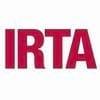Explore all the information on
Piglets nutrition
At weaning, piglets are challenged by multiple sudden changes in their environment and diet. They are typically weaned between 3 to 4 weeks, when their digestive tract and immune system are still in development. As they need to adapt to new components in the diet, they are challenged with lower feed intake, digestive disorders and nutrient losses. To ensure optimal growth, piglets need (pre)starter diets formulated to meet their nutritional requirements and fully support their digestive health and immune system.
A successful nursery feeding program contains several components, but the most important are to: 1) match dietary nutrient levels and ingredients with weight and age of the nursery pig; 2) maximize feed intake, because newly weaned pigs are in an extremely energy deficient state and early intake helps maintain a healthy intestine; and 3) appropriately adjust pigs (based on age, weight, health status, etc.) to lower cost diets (usually grain-soybean meal diets) as quickly as possible after weaning to reduce total feed cost. The concepts are relatively simple and can be applied in a variety of situations around the world.
Potassium diformate (KDF) is a specifically conjugated acid double-salt, patented by ADDCON and traded as FORMI on the European and world-market. Potassium diformate has been approved in the European Union as a non-antibiotic growth promoter for use in diets for piglets, growing-finishing pigs and in sows. It was also registered as the first replacement for in-feed antibiotics world-wide. Previously, in the first part of this series, we discussed the effects of...
Comments : 0
Recommendations: 0
Introduction It is generally assumed that the young pig up to about 70 kg body weight (BW) displays a limited physical capacity to ingest nutrients (Quiniou et al., 2000), and will respond to increases in dietary energy concentration with an increase in growth rate during an energy-dependent phase of growth. This phase is believed to extend up to 90 kg BW; however, the greatest limitation to ingest nutrients occurs in weaned pigs up to about 25 kg BW (Campbell, 1987; Whittemore,...
Comments : 0
Recommendations: 0
60-80% of antibiotics are used for digestive problems. The period after weaning is known for its regular antibiotic application and could be a perfect target for an important step in antibiotic reduction. Restrictive use of antibiotics is no longer an exception, but a global target. Besides the EU, also the US and Asia, started to implement changes. To restrict antibiotic usage (and ZnO...
Comments : 0
Recommendations: 5
Introduction During the period of weaning transition, piglets are under a stressful condition that combined with nutritional, environmental, and immunological problems. Though antibiotics can apply to solve the poor situation of post-weaning, the concern about antimicrobial resistance to antibiotics enhances to find suitable alternatives to antibiotics. Probiotics are incorporated at the stage to maintaining intestinal ecosystem, enhancement...
Comments : 3
Recommendations: 1
The weaning is a challenging period for the piglet, and the stressor factors involve, mainly, the new environment with new social interaction and change of diet. The pigs are handling and regrouped many times during their productive live (Martínez-Miró et al. 2016); however, during the weaning period, the consequences of this stress can lead to high production losses. After the birth, the piglet is highly dependent on specific and non-specific immune factors present in...
Comments : 0
Recommendations: 1
Dr. Milena Sevastiyanova, Technical, and Commercial Manager Central Europe at Innovad, explains the results of some trials done in Europe in order to alleviate stress around the weaning, using Lumance®, during IPPE 2018, in Atlanta, USA...
Comments : 1
Recommendations: 6
Introduction Nursery pigs often experience a lag in growth performance when transitioning from sows’ milk to dry feed during weaning. The lag is caused by several factors, including the dietary and environmental stresses associated with weaning. This post-weaning challenge can be associated with suppressed performance, diarrhea, and other intestinal health problems. While compensatory gain may occur as pigs become accustomed to solid feed, previous stresses may diminish...
Comments : 0
Recommendations: 0
There are multiple approaches a swine nutritionist can take in diet formulation: maximize performance, minimize cost, or maximize profit. Within each of these approaches, there are suboptions to decide from: Growth performance basis Maximize average daily gain (ADG) Minimize feed efficiency (F/G) Cost reduction basis Minimize cost per kg of diet Minimize feed cost per kg of...
Comments : 6
Recommendations: 3


Growth performance of pigs (6-25 kg) fed diets supplemented with DL-methionine or liquid MHA-FA under commercial conditions in Mexico
Suggested link
Cargill is bolstering its young animal nutrition capability by investing more than $15 million USD investment to add a piglet feed production line at its existing premix and nutrition facility in Tianjin, China. The nearly 7,000-square-meter young animal nutrition facility features cutting-edge technology and systems...
Comments : 0
Recommendations: 0
Introduction
The feed intake of swine is a deciding factor for both health and growth. Its relationship with growth is obvious; it is the nutrient supply above maintenance which sets the upper limit to the growth of an animal. The impact of feed intake on health is underappreciated. Experiments with E. coli infections showed this nicely. These experiments aimed at screening feed additives against E. coli. However, each attempt to find effective additives, other...
Comments : 0
Recommendations: 2
Ab Greven, Business Manager Palatability APAC for Nutriad, speaks to us about how producers can improve the feed intake of piglets using KRAVE®AP among other topics, during VIV Asia 2017, in Thailand....
Comments : 2
Recommendations: 5
The intestinal mucosa possesses an extensive surface area and is exposed to a large and diverse number of microorganisms and potentially antigenic proteins throughout the lifetime of a pig. The mucosal epithelium is capable of assimilating vital nutrients while simultaneously excluding ingested pathogens and other harmful materials. In mature swine, an array of gastrointestinal defense processes act rapidly and collectively to intercept, neutralize or eliminate harmful antigens and microbes...
Comments : 0
Recommendations: 2
World production of lipid sources Global production of vegetable oils has increased dramatically over the last 20 years with approximately 168 million metric tonnes produced in 2014. The primary vegetable oils produced in the world include palm oil (35 % of the total production), soybean oil (26 %), rapeseed/ canola oil (15 %), and sunflower oil (9 %). Other vegetable oils account for only about 15 % of the market, with palm kernel oil, cottonseed oil, peanut oil, coconut oil,...
Comments : 0
Recommendations: 0
Abstract The aim of this study was to investigate the effect of supplementation of Cordyceps militaris fermentation products (CMF) on growth performance and immunocompetence of piglets. The study involved three groups of animals, which were supplemented with CMF (500, 1000 and 1500 mg/kg feed), and a control group. CMF supplementation significantly increased growth performance in weaned piglets. Bodyweight gain, average daily gain and feed intake in animals supplemented with...
Comments : 5
Recommendations: 0
Weaning is one of the most stressful periods in the life of a pig, resulting in lower feed intake, poorer growth, and higher morbidity and mortality, particularly during the first weeks after weaning or until the immune system has become more fully developed. Weaning is a stress, independent of weaning age, caused by the abrupt separation from the sow and by other stressors related to changes in the physical and social environment, mingling with pigs from different litters, dietary...
Comments : 0
Recommendations: 0
A question to those who deal with pigs, do you think what really influences the weight of piglets at birth?
Each account is welcome .... Thank you....
Comments : 6
Recommendations: 0


Growth performance of pigs (6-25 kg) fed diets supplemented with DL-methionine or liquid MHA-FA under commercial conditions in Mexico
Suggested link
Abbreviations ALC: Acetyl-L-Carnitine; AREs: Antioxidant Response Elements; BSA: Bovine Serum Albumin; b.w.: Body Weight; CoQ: Coenzyme Q; eNOS: Endothelial Nitric Oxide Synthase; FFA: Free Fatty Acids; γGCS: γ-Glutamate Cysteine Ligase; GRα: Glucocorticoid Receptor-α; GR: Glutathione Reductase; GSH: Glutathione; GSHPx: Glutathione Peroxidase; GST: Glutathione Transferase; HO: Heme Oxygenase; HSP:...
Comments : 0
Recommendations: 0
Introduction Weaning removes young pigs from the passive immune protection they receive from the milk of the sow and increases their susceptibility to enterotoxigenic E. coli infection [1]. Earlyweaned pigs often exhibit an underdeveloped immune system, digestive disorders and post-weaning diarrhea [2]. Enterotoxigenic E. coli not only colonize the small intestine, but can also...
Comments : 0
Recommendations: 1
Introduction
Weaning pigs from the sow is one of the most stressful events in the pig’s life that can contribute to intestinal and immune system dysfunctions that result in reduced pig health, growth, and feed intake, particularly during the first week after weaning. Technological improvements in housing, nutrition, health, and management have been used to...
Comments : 1
Recommendations: 4
...
Comments : 3
Recommendations: 0





























